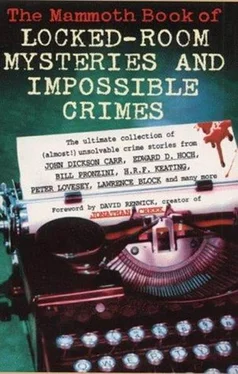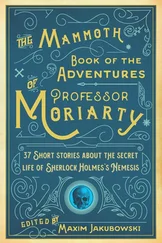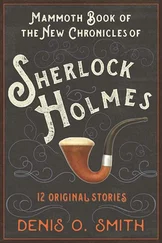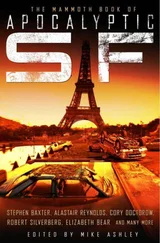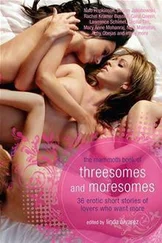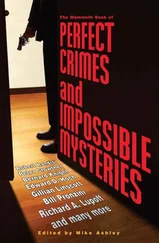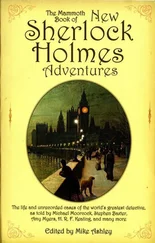Mike Ashley - The Mammoth Book of Locked-Room Mysteries And Impossible Crimes
Здесь есть возможность читать онлайн «Mike Ashley - The Mammoth Book of Locked-Room Mysteries And Impossible Crimes» весь текст электронной книги совершенно бесплатно (целиком полную версию без сокращений). В некоторых случаях можно слушать аудио, скачать через торрент в формате fb2 и присутствует краткое содержание. Жанр: Детектив, на английском языке. Описание произведения, (предисловие) а так же отзывы посетителей доступны на портале библиотеки ЛибКат.
- Название:The Mammoth Book of Locked-Room Mysteries And Impossible Crimes
- Автор:
- Жанр:
- Год:неизвестен
- ISBN:нет данных
- Рейтинг книги:3 / 5. Голосов: 1
-
Избранное:Добавить в избранное
- Отзывы:
-
Ваша оценка:
- 60
- 1
- 2
- 3
- 4
- 5
The Mammoth Book of Locked-Room Mysteries And Impossible Crimes: краткое содержание, описание и аннотация
Предлагаем к чтению аннотацию, описание, краткое содержание или предисловие (зависит от того, что написал сам автор книги «The Mammoth Book of Locked-Room Mysteries And Impossible Crimes»). Если вы не нашли необходимую информацию о книге — напишите в комментариях, мы постараемся отыскать её.
A new anthology of twenty-nine short stories features an array of baffling locked-room mysteries by Michael Collins, Bill Pronzini, Susanna Gregory, H. R. F. Keating, Peter Lovesey, Kate Ellis, and Lawrence Block, among others.
The Mammoth Book of Locked-Room Mysteries And Impossible Crimes — читать онлайн бесплатно полную книгу (весь текст) целиком
Ниже представлен текст книги, разбитый по страницам. Система сохранения места последней прочитанной страницы, позволяет с удобством читать онлайн бесплатно книгу «The Mammoth Book of Locked-Room Mysteries And Impossible Crimes», без необходимости каждый раз заново искать на чём Вы остановились. Поставьте закладку, и сможете в любой момент перейти на страницу, на которой закончили чтение.
Интервал:
Закладка:
One wide set of mini-blinds covered the three sections of the living room window. They were pulled up as far as they could go. I looked out of the central picture window, which looked as if it had been cleaned recently except for a couple of greasy-looking circles high on the glass. I rubbed my finger across them and saw that they were on the outside of the glass. The Czeppskis’ building loomed at me from across the street. There were a pack of wooden matches, a souvenir of Hollywood key ring devoid of keys, and a small dab of either clay or putty on the window sill, some of the small number of things present that hadn’t been supplied by the landlord. I turned back to Gibson. “Bullets?” I asked.
“As far as we can tell, two in the deceased and one in the wall – over there above and to the right of the front door.”
“Recent?”
“You thinking he was shot earlier and the sounds they heard in the hall were, maybe, a recording?”
“Just something to eliminate,” I said.
“They could smell the gunpowder in the hall, and Dr Gadolfus here says that the deceased bought it right about the time the shots were heard.”
The assistant medical examiner looked up. “That’s right,” he said.
“Did you find the gun?” I asked Gibson.
“It was lying next to the body,” he told me. “A Browning.380 automatic. But he didn’t shoot himself- that would be too easy. No powder burns. He was shot from at least six feet away.”
I shrugged. “The murderer was hiding in the room and mingled with the crowd in the hall when they broke in,” I suggested.
“Only the two officers went in,” Gibson told me, “and only two officers came out. They say so, and so do the civilian witnesses.”
“Just an idea,” I said.
“You’ll have to do better than that.”
“Give me a minute.”
“Here’s something weird,” Dr Gadolfus said, pausing in his labours. In an instant he had five people gathered around him and the body, eager for a view of something weird. “I didn’t notice until I turned this work light on,” he explained, “because his hands were in shadow. But look at his thumbs.”
The body was in something approaching full rigor mortis, and the hands were turned palms down. Dr Gadolfus held a mirror under the right hand so we could see. The ball of the thumb appeared to be dark purple – almost black. “The left thumb is the same,” Dr Gadolfus said, “I’d say this man has been fingerprinted recently.”
“Modern fingerprint fluids don’t do that,” Gibson said.
“Maybe he was just an old-fashioned sort of guy,” I said, but I was thinking of something else. Finally a useful idea had occurred to me. And if I was right, each of these two impossible crimes solved the other. I went slowly around the room, peering at the walls and floor, looking for something – anything – that would fit in with my theory. Finally I spotted it. There was a slight bit of plaster dust – just a touch – in a crack in the floor by the wall, opposite the window.
Gibson came over to see what I was doing. “You ought to get yourself one of them big lenses like Sherlock Holmes used,” he said, slapping me on the back.
I straightened up. “You want to make lieutenant?” I asked him.
“What are you talking about?”
“The credit for solving this one won’t do me any good,” I said. “I’ll give it to you.”
“You been here for, what, twenty minutes, and already you know who the invisible man is?”
“I know who and how, and about half of why,” I told him. “You want it?”
“No joke?”
“No joke.”
“Tell me about it.”
“Take a couple of uniformed officers and go across the way,” I told him, “Up to the Czeppskis’ apartment. Read Paula – that’s the daughter – her Miranda rights and tell her that Feodore is still alive and he’s identified her, or that he wrote her name in blood as he lay dying – something like that. The shock should do it. I’m betting she’ll confess.”
“Who’s Feodore?” Gibson asked.
I pointed to the corpse. “The Czeppskis’ butler,” I told Gibson. “That’s him.”
“Where do you get that from?”
“His thumbs. Like you said, that’s not fingerprint fluid. That’s the colour a butler’s thumbs turn when he’s been polishing the silver.”
“That’s a stretch,” Gibson said.
“The Czeppskis have a room full of freshly-polished silver,” I told him.
“Why the girl?” he asked me. “How’d she do it?”
“You arrest her,” I told him, “then we’ll talk.”
“Even if that is the Czeppskis’ butler, I can’t just walk in there and arrest this girl on your say so,” Gibson said. “Give me something.”
I pointed to the floor. “See that white stuff in the crack? It’s plaster.”
“Yeah, so?”
“Watch!” I said. I prodded at the wall with my forefinger, feeling something rough under the wallpaper as I went. When I had it fairly well located, I turned around. The crime scene crew had all paused what they were doing to watch me. If I was wrong, I was going to feel pretty foolish. But I wasn’t wrong. “Lend me a scalpel,” I asked Dr Gadolfus.
He fished in his bag and passed me a disposable scalpel, still nicely wrapped in aluminum foil. I peeled it out and ran the blade carefully around the edge of the outline I had mapped out. The rectangle of wallpaper fell away, revealing a two-by-three-foot wood panel that had been carefully inserted into a matching hole cut into the plaster and lathe wall. I gingerly pulled it out and turned it around. “Meet Saint Simon,” I said. “He’s worth about two million dollars.”
Gibson shook his head. “Good enough for me,” he said. “You must know something. I’ll go pick up the Czeppski girl.”
It was close to midnight when I set the St Simon painting down on the floor of Junior’s office, leaning it up against the wall. Junior was there, of course. He might have been called back when he heard I was coming in with the painting, but I think he lived there. “Two million dollars on the hoof,” I told him. “You’d better put it in the safe ‘till morning.”
He stared at the painting for a minute, his eyes narrowed, then he turned to me. “Gibson called,” he told me. “The girl confessed.”
“Yeah,” I said. “I thought she would.”
“She’s not really Czeppski’s daughter,” Junior said. “She’s his mistress. The daughter’s still in Paris. Married to a schoolteacher, apparently. Has no intention of leaving.”
“So that’s it,” I said. “So the mistress was planning to skip with the butler and the painting.”
“She says the wife was trying to kill her, so she had to get out. They had an agreement, one of these menages à trots , but the wife was beginning to feel pushed out, so she was pushing back. The girl was tired of the arrangement, and I suppose the graf, anyway, so she decided to head out and take a little something with her.”
I nodded. “It sounds right,” I said. “The two ladies didn’t seem to be on the best of terms.”
“How’d she do it?” Junior asked. “How’d she get the painting out of there? How’d she get out of the room after she shot what’s-his-name?”
“Feodore,” I said. “Didn’t she tell Gibson?”
“She’s too busy crying and blaming Feodore for everything. She was in the apartment when he walked in. He was supposed to be in San Francisco waiting for her. She realized that he was planning to take the St Simon himself and split, so they had a big fight and she shot him. In self-defence, she says.”
“Could be,” I said. “It was a good plan, but it just wasn’t her lucky day.”
Junior produced a bottle from his desk drawer and put it, and two glasses on the desk. “Fid Mut will be pleased to get that thing back,” he said. “Just what was their plan?”
Читать дальшеИнтервал:
Закладка:
Похожие книги на «The Mammoth Book of Locked-Room Mysteries And Impossible Crimes»
Представляем Вашему вниманию похожие книги на «The Mammoth Book of Locked-Room Mysteries And Impossible Crimes» списком для выбора. Мы отобрали схожую по названию и смыслу литературу в надежде предоставить читателям больше вариантов отыскать новые, интересные, ещё непрочитанные произведения.
Обсуждение, отзывы о книге «The Mammoth Book of Locked-Room Mysteries And Impossible Crimes» и просто собственные мнения читателей. Оставьте ваши комментарии, напишите, что Вы думаете о произведении, его смысле или главных героях. Укажите что конкретно понравилось, а что нет, и почему Вы так считаете.
